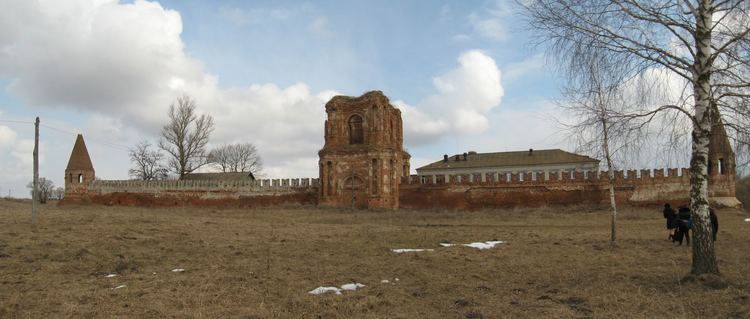Local time Thursday 8:38 PM | Urban Administrative Okrug Sevsky | |
 | ||
Municipal district Sevsky Municipal District Weather -1°C, Wind NW at 11 km/h, 55% Humidity | ||
Sevsk (Russian: Севск) is a town and the administrative center of Sevsky District in Bryansk Oblast, Russia, located on the Sev River (Dnieper's basin), 142 kilometers (88 mi) from Bryansk, the administrative center of the oblast. Population: 7,282 (2010 Census); 7,660 (2002 Census); 7,820 (1989 Census).
Contents
- Map of Sevsk Bryansk Oblast Russia 242440
- History
- Administrative and municipal status
- Architecture
- Sister cities
- References
Map of Sevsk, Bryansk Oblast, Russia, 242440
History
One of the original Severian towns, Sevsk is known to have been a part of the Principality of Chernigov since 1146. It was then incorporated into the Grand Duchy of Lithuania in 1356. Sevsk was finally annexed by the Grand Duchy of Moscow in 1585 and became a Russian border fortress. In 1634, the town withstood a three-week siege by the Polish army.
Throughout its subsequent history, Sevsk belonged to different guberniyas (governorates), including Kiev, Belgorod, and Oryol Governorates. The Soviet authority in Sevsk was established in March 1918. The town was occupied by the German army between October 1, 1941 and August 27, 1943. In 1944, Sevsk became a part of Bryansk Oblast.
Administrative and municipal status
Within the framework of administrative divisions, Sevsk serves as the administrative center of Sevsky District. As an administrative division, it is, together with four rural localities, incorporated within Sevsky District as Sevsky Urban Administrative Okrug. As a municipal division, Sevsky Urban Administrative Okrug is incorporated within Sevsky Municipal District as Sevskoye Urban Settlement.
Architecture
Architectural monuments include the remnants of defensive walls of the medieval fortress and the churches of Kazan Virgin (1760), Ascension (1765), and Sts. Peter and Paul (1809). Sevsk used to have two cathedrals, one dating to 1782 and another to 1811. Both cathedrals were destroyed during Stalin's rule, but their bell towers still stand.
